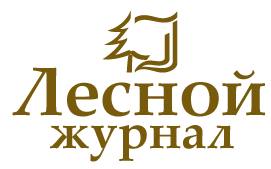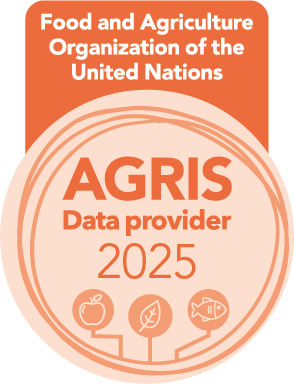

Address: Naberezhnaya Severnoy Dviny, 17, Arkhangelsk, 163002, Russian Federation, Northern (Arctic) Federal University named after M.V.Lomonosov, office 1425
Phone: +7 (8182) 21-61-18
E-mail: forest@narfu.ru
http://lesnoizhurnal.ru/en/
|
Modeling Forest Fire Development Taking into Account Spot Fires. P. 55–67
|
 |
Andreeva E.S., Bogdanova I.V., Sergeeva G.A.
UDС
614.841.123.24
DOI:
10.37482/0536-1036-2025-5-55-67
Abstract
Forest fires annually destroy millions of hectares of forest, damaging ecosystems and affecting the state of the surface and boundary layers of the air, thereby causing significant environmental risks. Thus, the forest fires of 2023, covering an area of 28.6 mln ha, caused the death of almost 0.71 % of the forests on the Earth’s surface. In this regard, forecasting the parameters of the development of intense forest fires is an urgent task. Modern mathematical models describing the development of forest fires do not take into account the role of the convective factor. The inability to take thermal convection into account can lead to a significant distortion of the modeled parameters of the process, preventing effective protection of the population and economic facilities from fire. The aim of the study has been to discuss the possibilities of refining the equations of mathematical models of forest fire development in order to develop measures to reduce socio-economic risks for the population. The works of P.M. Matveev, N.P. Kurbatskij, S.V. Puzach, D.L. Lajkhtman and A.S. Gavrilov have been used. The methods used by the authors include literary, analytical-statistical, analytical-graphical, and mathematical modeling methods. The introduction of the turbulence parameter into the equation of the predictive model has been justified. The necessity of supplementing the 1-layer model with the equations of the 2nd layer characterizing the development of a fire in an unsteady surface layer has been shown. The statistical convergence of the calculation results of the model containing the refinement has been proven in comparison with the classical equation of the R. Rothermel model. The obtained refined model equations will make it possible to effectively calculate the parameters of spot and intense crown fires within forest ecosystems. The introduction of the turbulence coefficient into the predictive equation has made it possible to identify the largest deviations in the calculated heights of the ellipse and the expected shape of fire propagation. The refined model equation will make it possible to significantly adjust the dimensions of this segment of the ellipse based on the consideration of developing vertical convective flows that contribute to the transformation of a ground forest fire into an intense crown one. Further scientific research in this area will help develop effective measures to reduce the socio-economic risks associated with forest fires.
Authors
Elena S. Andreeva*, Doctor of Geography, Assoc. Prof.; ResearcherID: ACG-6543-2022,
ORCID: https://orcid.org/0000-0001-7087-1870
Irina V. Bogdanova, Candidate of Engineering, Assoc. Prof.; ResearcherID: HLG-6288-2023,
ORCID: https://orcid.org/0000-0002-7726-7374
Galina A. Sergeeva, Candidate of Geography; ResearcherID: JUU-2392-2023,
ORCID: https://orcid.org/0009-0007-2497-4829
Acknowledgements: The authors express their gratitude to their colleagues from the Russian State Hydrometeorological University, and special thanks to Professor, Doctor of Physics and Mathematics, A.S. Gavrilov.
Keywordsspot fires, fire hazard monitoring, mathematical modeling, forest fire forecasting, socio-economic risks, environmental risks, convection, convective turbulence
For citation
Andreeva E.S., Bogdanova I.V., Sergeeva G.A. Modeling Forest Fire Development Taking into Account Spot Fires. Lesnoy Zhurnal = Russian Forestry Journal, 2025, no. 5, pp. 55–67. (In Russ.). https://doi.org/10.37482/0536-1036-2025-5-55-67
References
- Abaimov A.P., Prokushkin S.G., Sukhovol’skii V.G., Ovchinnikova T.M. Assessment and Forecast of Post-Fire Condition of Gmelin Larch on Permafrost Soils of Central Siberia. Lesovedenie = Russian Journal of Forest Science, 2004, no. 2, pp. 3–11. (In Russ.).
- Andreeva E.S., Sergeeva G.A., Bogdanova I.V. Refinement of the Ground Forest Fire Model Taking into Account Convective Turbulence. Bezopasnost’ tekhnogennykh i prirodnykh sistem = Safety of Technogenic and Natural Systems, 2025, vol. 9, no. 1, pp. 14–21. (In Russ.). https://doi.org/10.23947/2541-9129-2025-9-1-14-21
- Anoikin R.K. Analysis of Mathematical Models Used for Forest Ground Fires Forecasting. Tekhnologii grazhdanskoj bezopasnosti = Civil Security Technology, 2020, vol. 17, no. 2 (64), pp. 58–60. (In Russ.). https://doi.org/10.54234/CST.19968493.2020.17.2.64.10.58
- Barovik D.V., Taranchuk V.B. Algorithmic Fundamentals of Computer Model for Forest Fires Prediction. Vestnik Polotskogo gosudarstvennogo universiteta. Seriya C: Fundamental’nye nauki. Informatika = Vestnik of Polotsk State University. Part C. Fundamental Sciences, 2011, no. 12, pp. 51–56. (In Russ.).
- Budyko M.I. Heat Balance of the Earth’s Surface. Leningrad, Gidrometeoizdat Publ., 1956. 255 p. (In. Russ.).
- Vasilenko S.V., Gavrilov A.S., Lipovitskaya I.N., Mkhanna A. A Method of Climatological Analysis of the Vertical Structure of the Atmospheric Boundary Layer Using a Numerical Model. Uchenye zapiski Rossijskogo gosudarstvennogo gidrometeorologicheskogo universiteta = Proceedings of the Russian State Hydrometeorological University, 2006, no. 2, pp. 53–64. (In Russ.).
- The Occurrence of Forest Fires: Collection of Articles. Ed. by N.P. Kurbatskij. Moscow, Nauka Publ., 1964. 57 p. (In Russ.).
- Gavrilov A.S. On the Structure of the Atmospheric Boundary Layer above the Surface with Arbitrary Roughness Properties. Meteorologiya i gidrologiya = Russian Meteorology and Hydrology, 1973, no. 12, pp. 35–42. (In Russ.).
- Gavrilov A.S., Mhanna A., Kharchenko E.V. Verification of the Model of Atmospheric Boundary Layer Applied to the Problem Prediction of Air Pollution from Forest Fires. Uchenye zapiski Rossijskogo gosudarstvennogo gidrometeorologicheskogo universiteta = Proceedings of the Russian State Hydrometeorological University, 2013, no. 32, pp. 119–129. (In Russ.).
- Gavrilov A.S., Petrov Yu.S. Assessment of the Accuracy of Turbulent Flow Determination Using Standard Hydrometeorological Measurements over the Sea. Meteorologiya i gidrologiya = Russian Meteorology and Hydrology, 1981, no. 4, pp. 52–59. (In Russ.).
- Grishin A.M., Pugacheva P.V. Analysis of Impact of Forest and Steppe Fires on Cities and Villages and the New Determinate and Probability Model for Prediction of Fire Dangerous in Villages and Cities. Vestnik Tomskogo gosudarstvennogo universiteta. Matematika i mekhanika, 2009, no. 3 (7), pp. 99–108. (In Russ.).
- Karlin L.N., Vankevich R.E., Tumanovskaya S.M., Andreeva E.S., Efimova Yu.V., Khajmina O.V., Klevannyj K.A., Frumin G.T., Eremina T.R., Ershova A.A. Hydrometeorological Risks. St. Petersburg: Russian State Hydrometeorological University Publ., 2008. 282 p. (In Russ.).
- Kuleshov A.A., Myshetskaya E.E. Mathematical Simulation of Forest Fires Using Multiprocessor Computers. Matematicheskoe modelirovanie = Mathematical Models and Computer Simulations, 2009, vol. 1, pp. 629–634. https://doi.org/10.1134/S2070048209050093
- Kuleshov A.A., Myshetskaya E.E., Yakush S.E. Numerical Simulation of Forest Fire Propagation Based on Modified Two-Dimensional Model. Matematicheskoe modelirovanie = Mathematical Models and Computer Simulations, 2017, vol. 9, pp. 437–447. https://doi.org/10.1134/S207004821704007X
- Kurbatskij N.P. Fire Danger in the Forest and its Measurement on Local Scales. Lesnye pozhary i bor’ba s nimi: Collection of Articles. Ed. by N.P. Kurbatskij. Moscow, the USSR Academy of Sciences Publ., 1963, pp. 5–30. (In Russ.).
- Lajkhtman D.L., Shemetova G.V. Unsteady Surface Layer. Abrupt Change in Turbulent Heat Flux. Nekotorye voprosy fiziki atmosfery. Trudy Leningradskogo Gidrometeorologicheskogo instituta, 1974, iss. 49, pp. 12–18. (In Russ.).
- Martynov A.V., Grekov V.V., Popova O.V. Measuring Tool Kit for Express Analysis of Intumescent Fire Protection at a Construction Facility. Pozhary i chrezvychajnye situatsii: predotvrashchenie, likvidatsiya = Fires and Emergencies: Prevention, Elimination, 2021, no. 3, pp. 61–68. (In Russ.). https://doi.org/10.25257/FE.2021.3.61-68
- Matveev P.M. The Probability of Spot Fires during Forest Fires. Voprosy lesnoj pirologii: Collection of Articles. Ed. by N.P. Kurbatski. Krasnoyarsk, Institute of Forest and Wood Publ., 1975, pp. 44–65. (In Russ.).
- Mednov A.O., Popova E.S. Ensuring Fire Safety Based on Studying the Characteristics of Fire Development and Taking into Account the Flammable Liquids Used. Trudy Rostovskogo gosudarstvennogo universiteta putej soobscheniya, 2017, no. 3, pp. 82–84. (In Russ.).
- Puzach S.V., Le T.A., Nguyen T.H. Fire Hazard from Spotting Ignition at Crown Fires for Power Engineering Facilities. Pozhary i chrezvychajnye situatsii: predotvrashchenie, likvidatsiya = Fires and Emergencies: Prevention, Elimination, 2018, no. 2, pp. 64–70. (In Russ.). https://doi.org/10.25257/FE.2018.2.64-70
- Sofronov M.A., Volokitina A.V. Pyrological Zoning in the Taiga Zone. Novosibirsk, Nauka Publ., 1990. 204 p. (In Russ.).
- Abannikov V.N., Seroukhova O.S., Mkhanna A.I.N., Podgaiskii E.V. Assessing the Impact of Agrometeorological Conditions on the Yield of Grain and Leguminous Crops in European Russia. IOP conference Series: Earth and Environmental Science, 2022, vol. 1010, art. no. 012033. https://doi.org/10.1088/1755-1315/1010/1/012033
- Adamyan V.L., Sergeeva G.A., Seferyan L.A., Gorlova N.Yu. Development of Technological Measures to Ensure the Safety of Production Facilities in Petrochemical Industry. IOP Conference Series: Materials Science and Engineering, 2021, vol. 1083, art. no. 012050. https://doi.org/10.1088/1757-899X/1083/1/012050
- Andreeva E.S. The Possibilities of Using the Minimax Method to Diagnose the State of the Atmosphere. Journal of Atmospheric Science Research, 2023, vol. 6, iss. 2, pp. 42–49. https://doi.org/10.30564/jasr.v6i2.5519
- Bogdanova I., Dymnikova O., Loskutnikova I. Analysis of the Noise Load from the Manufacturing Enterprise on the Territory of Residential Buildings Based on Complex Mathematical Model. IOP Conference Series: Materials Science and Engineering, 2020, vol. 1001, art. no. 012119. https://doi.org/10.1088/1757-899X/1001/1/012119
- Denisov O., Andreeva E. An Innovative Approach to the Elimination of Combustion Foci at MSW Landfills (on the Example of the Rostov Region). E3S Web of Conferences, 2021, vol. 273, art. no. 04006. https://doi.org/10.1051/e3sconf/202127304006
- Rothermel R.C. A Mathematical Model for Predicting Fire Spread in Wildland Fuels. Ogden, Utah, U.S. Department of Agriculture, Intermountain Forest and Range Experiment Station, 1972, Research Paper INT-115. 40 p.
|
Make a Submission


Lesnoy Zhurnal (Russian Forestry Journal) was awarded the "Seal of Recognition for Active Data Provider of the Year 2025"

|







